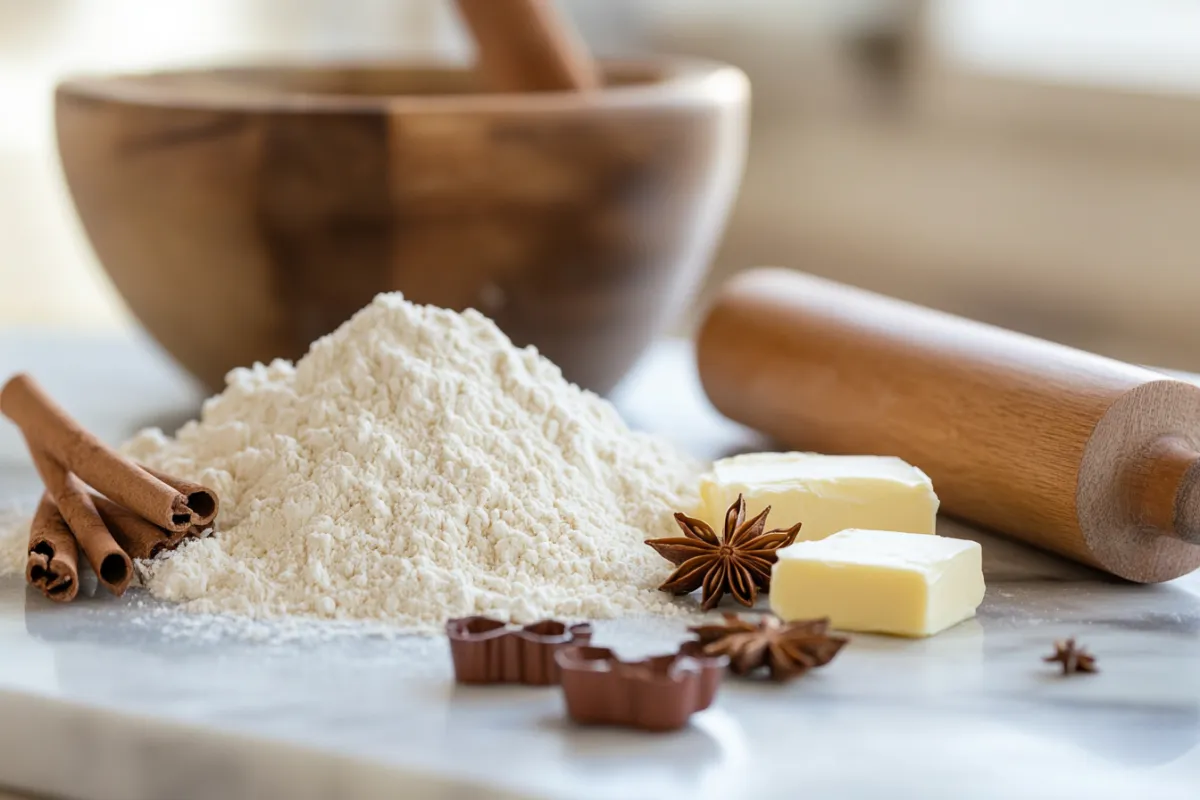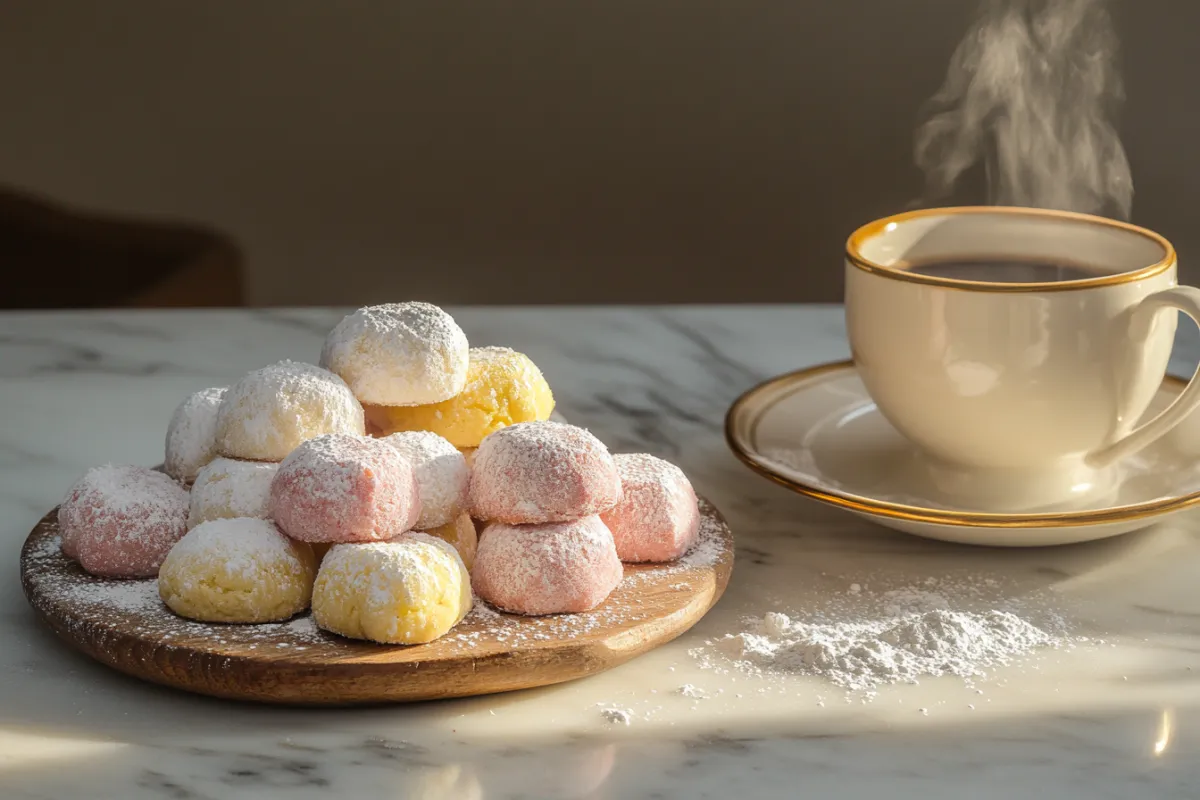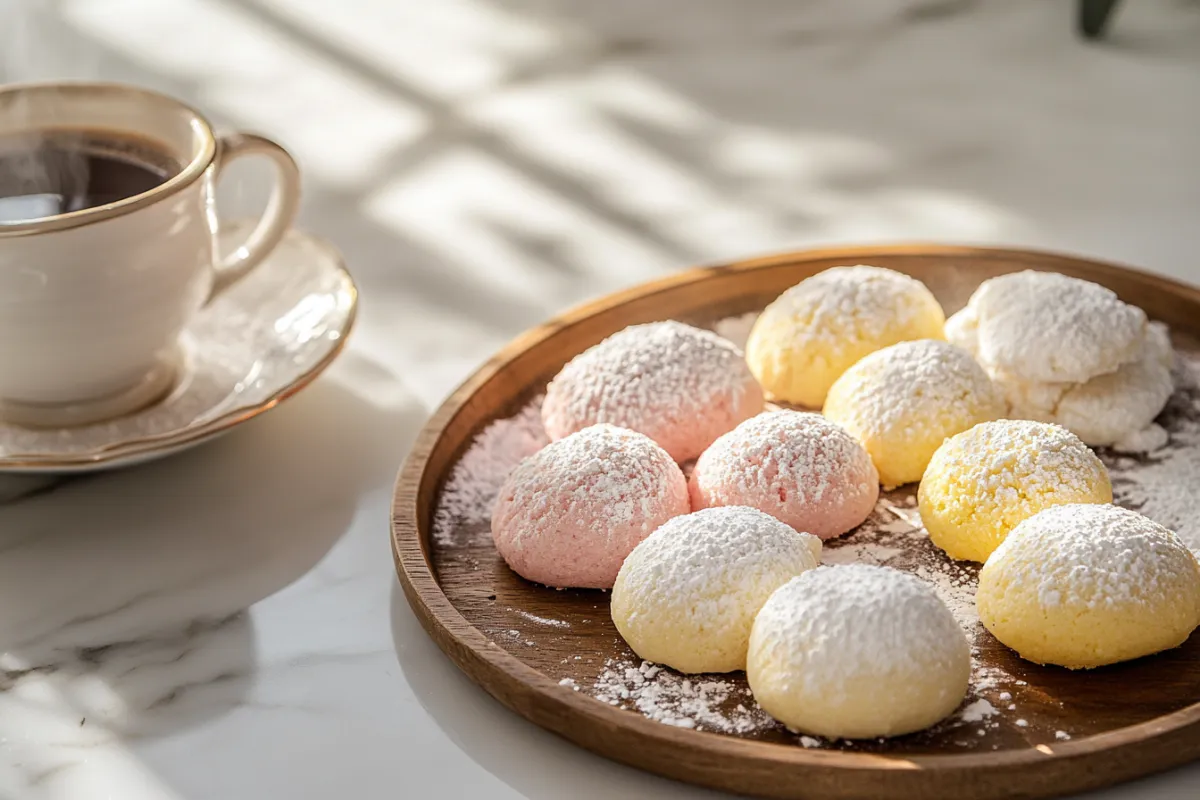Introduction to Mexican Cookies
Mexican cookies are more than just a sweet treat—they hold a special place in Mexico’s rich cultural heritage. With centuries of history behind them, these cookies reflect the unique blend of indigenous and Spanish culinary influences that have shaped Mexican cuisine. Their variety is astonishing, ranging from crumbly shortbread to spiced molasses treats, each one representing a different region or special occasion. These cookies are not only enjoyed on a daily basis but also play a significant role during holidays, festivals, and religious ceremonies.
Whether it’s the elegant simplicity of Mexican Wedding Cookies served during celebrations or the iconic Marranitos enjoyed during Christmas, Mexican cookies are an essential part of the country’s culinary tapestry. This article will dive deep into the history, key ingredients, popular types, unique twists on traditional recipes, and the cultural significance of Mexican cookies. By the end, you’ll have a better understanding of why these cookies hold such a cherished place in Mexican homes and bakeries.
The History and Origin of Mexican Cookies
Pre-Colonial Influences on Sweets in Mexico
Before the arrival of the Spanish colonizers in the 16th century, the indigenous peoples of Mexico already had a sophisticated tradition of making sweets. Ingredients such as corn, honey, and cacao were the primary staples in pre-colonial Mexican cuisine, including in their sweets. These natural elements, available in abundance, were used to create rustic but flavorful treats.
Spanish Colonization and the Birth of Mexican Cookies
The introduction of new ingredients by the Spanish—such as wheat flour, sugar, butter, and cinnamon—profoundly changed the landscape of Mexican baked goods. The combination of native Mexican ingredients with these European staples resulted in a fusion of flavors and textures that define Mexican cookies today.
One significant influence was piloncillo, an unrefined form of cane sugar introduced during colonization. Its deep, caramel-like flavor became a fundamental component of many cookies, such as marranitos and coyotas. Additionally, the use of spices such as cinnamon and anise, which were brought from Europe, enhanced the flavor profiles of traditional cookies, giving rise to a variety of desserts that remain beloved to this day.
The Role of Cookies in Celebrations and Traditions
Over the centuries, Mexican cookies have become a staple in religious and communal celebrations. They are often featured during holidays like Día de los Muertos, Christmas, and Las Posadas. Cookies like polvorones and hojarascas are commonly served during these events, contributing not only to the celebration’s food offerings but also to its symbolism.
Mexican cookies also play an essential role in weddings and other life events. Mexican Wedding Cookies are often served as a gesture of love and unity, while cookies shaped like animals or religious symbols are given as gifts or offerings during various religious ceremonies.
Today, the recipes for these cookies have been passed down through generations, often with slight regional variations that reflect the local ingredients and customs. From northern Mexico’s coricos to Sonora’s coyotas, each cookie carries its own cultural and historical significance.
Key Ingredients in Mexican Cookies

Flour: The Foundation
Flour is one of the primary ingredients in Mexican cookies, particularly wheat flour, which was introduced by the Spanish. While many cookies use wheat flour for a soft and crumbly texture, some, such as coricos, rely on masa harina—a type of corn flour that imparts a distinct flavor and texture.
Piloncillo: The Sweet Star
One of the most distinctive ingredients in traditional Mexican cookies is piloncillo, an unrefined sugar derived from sugar cane juice. Unlike regular white sugar, piloncillo has a deep, rich flavor akin to molasses. It is commonly used in cookies like marranitos, where it adds both sweetness and complexity to the overall taste. Piloncillo is typically sold in solid cones, which are grated or melted before being added to the dough.
Butter and Lard: Creating Melt-In-Your-Mouth Textures
Fat is another crucial component in Mexican cookies, with butter and lard being the most common choices. Butter, which adds richness and a tender crumb, is used in cookies like polvorones and Mexican Wedding Cookies. Lard, on the other hand, imparts a more traditional flavor and is often used in recipes that have been passed down through generations. The use of lard gives cookies a melt-in-your-mouth quality that is hard to replicate with butter alone.
Spices: Adding Warmth and Flavor
Mexican cookies are known for their bold use of spices, most notably cinnamon and anise. Cinnamon, a common ingredient in cookies like hojarascas, adds a warm, comforting flavor that pairs well with the buttery dough. Anise, with its licorice-like taste, is often used in cookies like coricos, adding a distinctive, aromatic flavor that elevates the overall experience.
Vanilla and Other Flavorings
Another common ingredient in Mexican cookies is vanilla, which, surprisingly, is native to Mexico. Vanilla is used to enhance the sweetness and flavor profile of cookies, especially in lighter, more delicate varieties like polvorones. In some modern variations, lime zest, orange zest, or even chili powder are used to add a refreshing twist.
Popular Types of Mexican Cookies
1. Polvorones (Mexican Shortbread Cookies)
Polvorones are perhaps the most famous Mexican cookie. Known for their delicate, crumbly texture, these cookies are traditionally made with flour, butter, and powdered sugar. They are available in various flavors, from classic vanilla and cinnamon to more modern versions like chocolate and pecan. A popular variation is the tri-colored polvorones, often found at bakeries during holidays and festivals.
2. Mexican Wedding Cookies (Galletas de Nuez)
Mexican Wedding Cookies, also known as bizcochitos or snowballs, are buttery, nutty cookies rolled in powdered sugar. They are traditionally made with ground nuts—usually pecans or almonds—and their soft, melt-in-your-mouth texture makes them a favorite at weddings and other celebrations. The powdered sugar gives them a delicate appearance, perfect for formal occasions.
3. Marranitos (Puerquitos)
Marranitos, or “little pigs,” are gingerbread-like cookies shaped like pigs. They are flavored with piloncillo, which gives them a rich, molasses-like sweetness, and are spiced with cinnamon and ginger. Marranitos are soft and chewy, making them a comforting treat often enjoyed with coffee or atole, particularly during the holiday season.
4. Coricos (Mexican Corn Cookies)
Made from masa harina, coricos are crisp, slightly sweet cookies with a distinct corn flavor. They are particularly popular in northern Mexico, where corn plays a central role in the cuisine. Simple yet satisfying, coricos are often served with coffee or hot chocolate.
5. Hojarascas (Cinnamon Shortbread Cookies)
Hojarascas are light, crisp cookies dusted with cinnamon sugar, making them a popular choice during Christmas. Their simplicity belies their flavor, as the combination of cinnamon and sugar creates a satisfying treat that both adults and children enjoy.
6. Coyotas (Filled Mexican Cookies)
Originating from Sonora, coyotas are large, flat cookies filled with piloncillo. The filling is sweet and caramel-like, making them more decadent than other cookies. Coyotas are typically eaten as a snack, especially during the afternoon alongside a hot drink.
Unique Twists on Mexican Cookie Recipes
While traditional Mexican cookies are loved for their authentic flavors, modern adaptations and twists have introduced exciting new varieties.
1. Mexican Hot Chocolate Cookies
By incorporating chili powder and cocoa into traditional cookie dough, Mexican Hot Chocolate Cookies offer a spicy-sweet combination. The slight heat from the chili contrasts beautifully with the rich sweetness of the cocoa, creating a memorable dessert.
2. Margarita Cookies
Inspired by the classic Mexican cocktail, Margarita Cookies feature lime zest, orange zest, and a touch of tequila in the dough. The citrusy notes make these cookies refreshing, while the tequila adds a subtle complexity that evokes the spirit of a margarita.
3. Chocolate-Dipped Polvorones
A modern twist on the traditional polvorones involves dipping half of the cookie in melted dark chocolate. This simple addition elevates the shortbread to a more indulgent treat, combining the richness of the chocolate with the buttery, crumbly texture of the polvorón.
4. Dulce de Leche-Filled Mexican Wedding Cookies
A modern adaptation of Mexican Wedding Cookies involves filling the centers with a small dollop of dulce de leche before baking. This adds a creamy, caramelized layer to the traditional nutty cookie.
How to Serve and Store Mexican Cookies

Serving Mexican Cookies
Mexican cookies are best enjoyed fresh, but they can also be made ahead and stored for later. Traditionally, they are served alongside hot beverages like coffee, atole, or Mexican hot chocolate. For festive occasions, cookies can be arranged on a decorative platter, often alongside other Mexican sweets such as pan dulce.
For a more formal event like a wedding, consider presenting Mexican Wedding Cookies in small gift boxes or wrapped in decorative paper as party favors. Their delicate appearance and delicious flavor make them a fitting gift for guests.
Storing Mexican Cookies
To keep Mexican cookies fresh:
- Room temperature: Store them in an airtight container at room temperature for up to a week. Ensure that they are fully cooled before sealing to prevent moisture from softening them.
- Freezer: For longer storage, freeze the cookies in a sealed container for up to three months. When ready to enjoy, simply thaw them at room temperature for a few hours.
- Layering tip: If freezing delicate cookies like Mexican Wedding Cookies, place a sheet of parchment paper between layers to prevent them from sticking together.
FAQs about Mexican Cookies
1. What are the most popular Mexican cookies?
Some of the most popular Mexican cookies include Polvorones, Mexican Wedding Cookies, Marranitos, Hojarascas, and Coyotas.
2. What is piloncillo, and why is it used in Mexican cookies?
Piloncillo is unrefined cane sugar that has a rich, molasses-like flavor. It adds depth and sweetness to many Mexican cookie recipes, such as marranitos and coyotas.
3. Are Mexican cookies gluten-free?
Some Mexican cookies, like coricos, are gluten-free because they are made with masa harina instead of wheat flour. However, most traditional cookies do contain gluten, so it’s essential to check the recipe if you have dietary restrictions.
4. How do I store Mexican cookies to keep them fresh?
Store Mexican cookies in an airtight container at room temperature for up to a week. For longer storage, freeze them in a sealed container and thaw them at room temperature when ready to eat.
Conclusion
Mexican cookies are more than just desserts—they are a reflection of Mexico’s diverse history, cultural heritage, and deep-rooted traditions. Whether it’s the buttery richness of Polvorones, the spiced molasses flavor of Marranitos, or the simplicity of Coricos, there’s a cookie for every occasion. These treats bring families together, creating cherished memories with each bite. Whether you’re baking them for a special occasion or just to enjoy with a cup of coffee, Mexican cookies are a delicious way to connect with Mexico’s rich culinary past.
Related Articles
- Banana Cookie Recipe: Looking for another cookie recipe? Try these delicious banana cookies as a healthier alternative.
- How to Make Protein Cookies: For a protein-packed version of cookies, check out this recipe.

